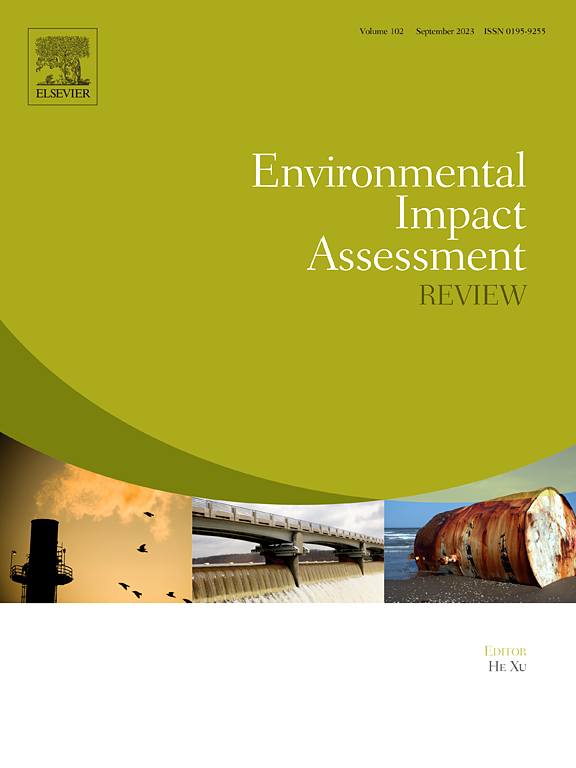人造草坪使用寿命结束时的环境影响:生命周期评估方法
IF 9.8
1区 社会学
Q1 ENVIRONMENTAL STUDIES
引用次数: 0
摘要
本研究旨在探讨人造草坪(AT)生命周期末期的管理方法,评估与此关键阶段相关的挑战和机遇。虽然许多研究分析了人工草坪的整个生命周期,或将其与天然草坪进行了比较,但人工草坪生命周期结束后的管理往往被过度简化或带有假设。这在准确评估AT处置的具体环境影响方面留下了重大差距。为了解决这一差距,我们的研究评估了生命末期管理的三种方案:芬兰的能源回收、丹麦的回收和芬兰的当地回收。每个方案都包括基于橡胶屑(CR)管理的子方案,要么重复使用,要么焚烧。以国际足联标准大小的足球场(7140平方米)为功能单位,我们的分析表明,企业社会责任管理是环境绩效的关键决定因素。结果表明,芬兰的地方回收与CR再利用达到了最佳的环境效果,全球变暖潜能值(GWP)为- 6 t CO2。当量/场,与2吨CO2相比。eq/field用于国际回收和25吨二氧化碳。eq/field用于芬兰的能源回收。即使在焚烧CR的情况下,芬兰当地的回收利用仍然是环保的,二氧化碳排放量为162吨。当量/场相对于167和179吨二氧化碳。eq/field分别用于芬兰的国际回收和能源回收。本研究强调了发展地方回收基础设施和优化CR管理策略的重要性。研究结果为政策制定者和废物管理运营商提供了有价值的见解,强调了实现更可持续的AT处理实践的途径,同时解决了不同处理方案对环境的影响。本文章由计算机程序翻译,如有差异,请以英文原文为准。
Environmental impacts of artificial turf at end of life: A life cycle assessment approach
This study aimed to investigate methods for managing artificial turf (AT) at the end of its life cycle, assessing the challenges and opportunities associated with this critical phase. While many studies have analysed the full lifecycle of AT or compared it to natural turf, end-of-life management has often been oversimplified or approached with assumptions. This leaves a significant gap in accurately assessing the environmental impacts specific to AT disposal. Addressing this gap, our study evaluates three scenarios for end-of-life management: energy recovery in Finland, recycling in Denmark, and local recycling in Finland. Each scenario includes sub-scenarios based on crumb rubber (CR) management, either reuse or incineration.
Using a standard FIFA-size football field (7140 m2) as the functional unit, our analysis shows that CR management is the key determinant of environmental performance. The results demonstrate that local recycling in Finland with CR reuse achieves optimal environmental outcomes, with Global Warming Potential (GWP) of −6 t CO2.eq/field, compared to 2 t CO2.eq/field for international recycling and 25 t CO2.eq/field for energy recovery in Finland. Even in scenarios where CR is incinerated, local recycling in Finland remains environmentally preferable, with emissions of 162 t CO2.eq/field versus 167 and 179 t CO2.eq/field for international recycling and energy recovery in Finland, respectively. This research emphasizes the importance of developing local recycling infrastructure and optimizing CR management strategies. The findings provide valuable insights for policymakers and waste management operators, highlighting pathways to more sustainable AT disposal practices while addressing the environmental impacts of different treatment options.
求助全文
通过发布文献求助,成功后即可免费获取论文全文。
去求助
来源期刊

Environmental Impact Assessment Review
ENVIRONMENTAL STUDIES-
CiteScore
12.60
自引率
10.10%
发文量
200
审稿时长
33 days
期刊介绍:
Environmental Impact Assessment Review is an interdisciplinary journal that serves a global audience of practitioners, policymakers, and academics involved in assessing the environmental impact of policies, projects, processes, and products. The journal focuses on innovative theory and practice in environmental impact assessment (EIA). Papers are expected to present innovative ideas, be topical, and coherent. The journal emphasizes concepts, methods, techniques, approaches, and systems related to EIA theory and practice.
 求助内容:
求助内容: 应助结果提醒方式:
应助结果提醒方式:


